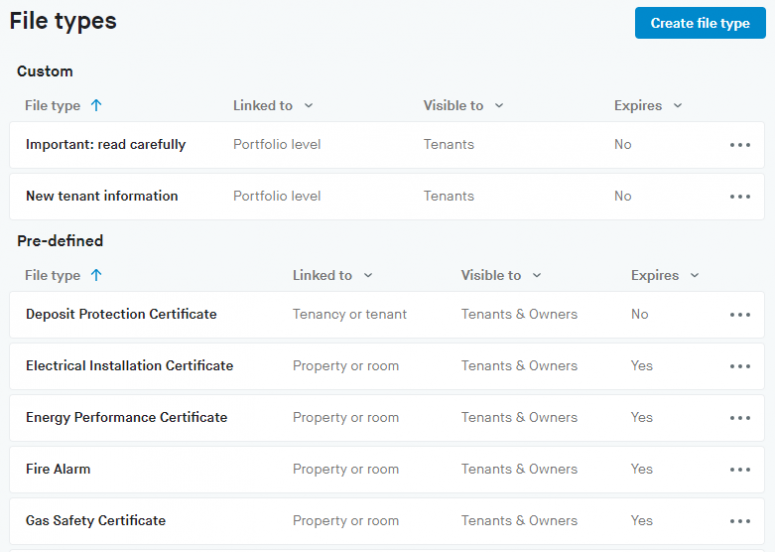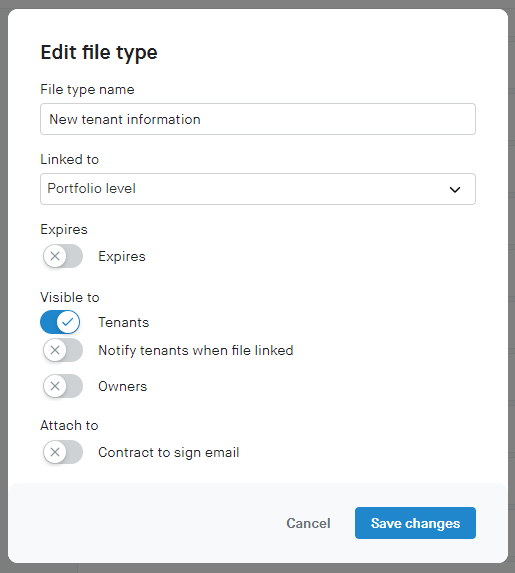



Overview
On your File Manager dashboard, click menu icon next to the upload file button in the top right of the page. The File type manager is where you can view the pre-defined file types and create custom file types (requires a Business or Enterprise Concurrent plan).
Pre-defined file types can be used by a user on your account when they upload file. There are also files generated automatically by the system such as a signed tenancy agreement or a statement of account.
Deposit Protection Certificate.
Electrical Installation Certificate.
Energy Performance Certificate.
Fire Alarm.
Gas Safety Certificate.
House in Multiple Occupation Licence.
Inventory Report.
Personal Data Fair Processing Notice.
Section 21 Notice.
Section 8 Notice.
System generated file types include the following:
How to Rent Guide.
Tenancy Contract.
Statement of Account.
License Agreement.
Custom file types can be created and used for any other file that you want tenants or Owners to have access to from their accounts.
If your tenants use the Tenancy App, the files will be located in the My Documents section of the Tenancy Details.

Creating a new custom file
Click the Create file type button.
Enter a file type name, select where the file is linked, the expiry date, what users the file will be visible to, and if you want to attach the file to the contract to sign email.
File type name - what will be visible to the tenants and/or the owners.
Linked to - files can be linked to:
Owner.
Portfolio level.
Property or room.
Tenancy or tenant.
Expires - when the file expires, and if you want to be notified before it does.
Visible to - who the file is visible to, and if you want them to be notified when a file is linked.
Click Create file type to save.

Editing a custom file
Click the menu icon to edit the custom file type.
Make the necessary changes.
Click Save changes to save the custom file type.



